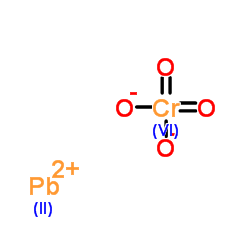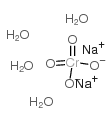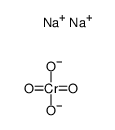Mutation Research/Fundamental and Molecular Mechanisms of Mutagenesis
2006-11-07
Particulate and soluble hexavalent chromium are cytotoxic and genotoxic to human lung epithelial cells.
Sandra S Wise, Amie L Holmes, John Pierce Wise
Index: Mutat. Res. 610(1-2) , 2-7, (2006)
Full Text: HTML
Abstract
Particulate hexavalent chromium (Cr(VI)) is a well-established human lung carcinogen. It is currently a major public health concern, there is widespread exposure to it in occupational settings and to the general public. However, despite the potential widespread exposure and the fact that the lung is its target organ, few studies have considered the toxic effects of particulate Cr(VI) in human lung cells. Accordingly, we used lead chromate as a model particulate Cr(VI) compound and determined its cytotoxicity and genotoxicity in cultured human bronchial epithelial cells, using BEP2D cells as a model cell line. We found that lead chromate induced concentration-dependent cytotoxicity in BEP2D cells after a 24h exposure. Specifically, the relative survival was 78, 59, 53, 46 and 0% after exposure to 0.5, 1, 5, 10 and 50 microg/cm(2) lead chromate, respectively. Similarly, the amount of chromosome damage increased with concentration after 24h exposure to lead chromate. Specifically, 0.5, 1, 5 and 10 microg/cm(2) damaged 10, 13, 20 and 28% of metaphase cells with the total amount of damage reaching 11, 15, 24 and 36 aberrations per 100 metaphases, respectively. Lead chromate (50 microg/cm(2) lead chromate) induced profound cell cycle delay and no metaphases were found. In addition we investigated the effects of soluble hexavalent chromium, sodium chromate, in this cell line. We found that 1, 2.5, 5 and 10 microM sodium chromate induced 66, 35, 0 and 0% relative survival, respectively. The amount of chromosome damage increased with concentration after 24h exposure to sodium chromate. Specifically, 1, 2.5 and 5 microM damaged 25, 34 and 41% of metaphase cells with the total amount of damage reaching 33, 59 and 70 aberrations per 100 metaphases, respectively. Ten micromolar sodium chromate induced profound cell cycle delay and no metaphases were found. Overall the data clearly indicate that hexavalent Cr(VI) is cytotoxic and genotoxic to human lung epithelial cells.


